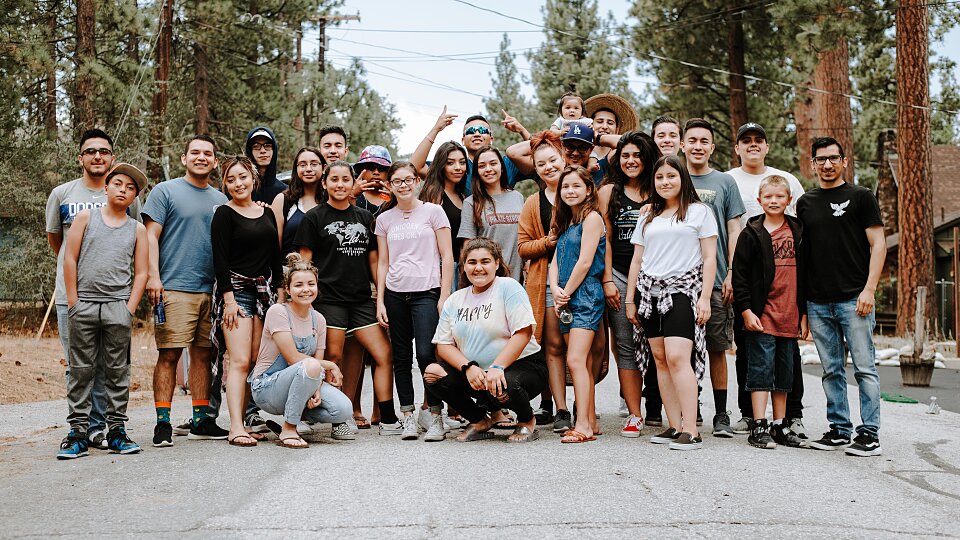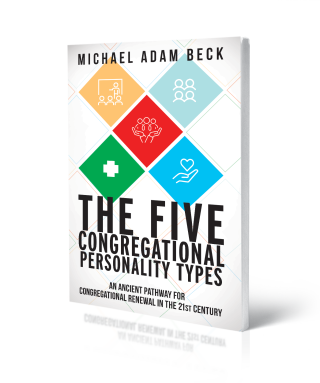Before You Start a Fresh Expression
I was so delighted when Cindy told me she wanted to come “check out the Sunday morning thing.” Cindy was a single mom with two kids. She referred to herself as a “done.” This self-description flowed back to a negative and harmful church experience she had years ago. This wounding deterred her from attending any church for almost a decade.
However, she had been coming regularly for three months to one of our Fresh Expressions of Church called Burritos and Bibles. We gather in the local Tex-Mex restaurant, eat burritos and unlimited chips and salsa, reflect on Jesus stories, and pray together.
So, you can imagine how bummed I was when after visiting our 11am traditional worship service she never returned—to the service or to Burritos and Bibles.
Five unanswered rings into the call I assumed I was about to go to voicemail and was mentally preparing for what message I would leave. Then, she answered.
"Ummm, hey Cindy, just wanted you to know we’ve been missing you at B and B,” I fumbled.
In the short conversation that followed, no longer than five minutes, Cindy gave me the low down. At the 11am service, one person hissed at her child for coloring on the bulletin, another gave her a dirty look for having her phone out in church during the reading of the Scripture, which was exactly what Cindy was doing with her phone, reading along.
The experience awakened in her all the trauma we had sought to heal by being together worshiping Jesus around burritos.
After offering sincere apologies as deeply as I could, Cindy told me she needed some space and she would try to make it back into B and B someday.
Someday has yet to come.
This is one reason you should not start a Fresh Expression. If you are involved in a toxic and harmful congregation, there’s some internal work that needs to be done.
Let me clarify, the purpose of a Fresh Expression is not to get people back to your inherited church. It’s to form church with people who will most likely never visit your Sunday morning worship service. It’s not the save your congregation plan. It’s not a pack butts in pews or increase nickels and noses strategy.
This is not a self-preservation endeavor… it is a self-donation endeavor. The Eucharistic nature of the Body of Christ is to be broken and given freely to the world. Fresh Expressions are about that.
The only right motivation to start a Fresh Expression of Church is because there are people of great value and sacred worth, who will never hear the Gospel if we don’t. People who will never know the beautiful gift that is communal life in Jesus, if we don’t go out and offer it to them in the normal rhythms, spaces, and practices of everyday life.
And yet, as I write these words on a Sunday afternoon, I’m doing so after baptizing Arthur, who first connected to our congregation through a recovery fresh expression.
Gena Palacios was there to help me with Arthur’s baptism. She is another woman who had been harmed by the church and had a standoff with God, “If you want me to follow you, you’ll have to do it without the church” she bargained. That was, until a friend kept pestering her to come to Family Table Community Dinner. There Gena found a new church family.
Now Gena, a lay person with no seminary education, has planted a fresh expression, joined the preaching team, and will be delivering the sermon next Sunday.
In the same service, Jordan, who got connected with us at Higher Power Hour, another fresh expression of St Marks, provided a new rap song he wrote and produced. Then Robbie, brought the gift of playing Native American flute. Each of these people, and others, are now part of our inherited congregation at St Marks, but their first point of contact was in one of our seven fresh expressions.
I call this a “blended ecology of church” in which inherited and emerging forms of church live together in symbiotic relationship and even graft together over time.
However, if one of these organisms is unhealthy, it actually causes the whole ecology to suffer. Think of it as a habitat infected with a deadly virus, any living things that enter the area become sick.
I've written at length in Deep and Wild and Fresh Expressions in a Digital Age about “the innovator’s dilemma.” In the declining systems of the church this refers to the position clergy and their teams now find themselves: the challenge of discerning whether to devote energy to sustaining the established organization or unleashing innovation to create something new.
There I tried to show this is a false either/or proposition and that “dual transformation” flips the dilemma. Every congregation must both “grow the center and experiment on the edge” simultaneously.
Yet, in over a decade of training and writing about how to cultivate fresh expressions from the base of inherited congregations, the elephant in the room is still squatting in plain sight… but how can you “grow the center” when your congregation is sick, dwindling, or even harmfully toxic? Starting Fresh Expressions seems simple enough, but what about when Cindy wants to “come check out the Sunday morning thing”?
Admittedly, I find it much easier to cultivate new faith communities with those outside the church than to do the more challenging relational work of helping existing congregations get healthy again. Yet 15 years of failing forward at this has taught me the hard way that you really must do both.
First I must confess that my intent has never been to “grow” congregations in the attractional, church growth sense. Why would we waste time doing something Jesus never attempted to do? Because “growing a big church” gives us an ego boost? When I participate in conferences and trainings, clergy frequently pop the measuring stick question… “how big is your congregation?” or “what’s your worship attendance?” My stock answer is “very small, not remarkable at all.” That is, any one of the little congregations or fresh expressions are not “big” in the megachurch sense. I have no desire to grow a “big church” in the way we have typically thought about it in the US since the 1960’s.
Second, innovation is not the answer to the problem of church decline. Innovation is often understood as applying our ingenuity and skills to create our way out of a problem. Disruptive innovation can also merely be creative destruction under a fancier name. Innovation often falls into the trap of “all new things” rather than the Biblical and Jesus way of “all things new.” Those phrases are not a matter of semantics, yes, it’s simply rearranging a single word, but one is Biblical, the other belongs to the consumeristic cult of “brand spanking newness” and “new and improved.”
Third, the crisis of the church is not to become “relevant” in a post-Christendom reality. Communal life in Jesus cannot be irrelevant when we truly get a taste of it. This is another false assumption and fresh expressions are not intended to make church relevant. We’ve been gathering in a tattoo parlor to worship Jesus for 11 years not to be relevant, but to be faithful to the one who was already there before we got there.
The true way of congregational renewal is a pathway of death and resurrection, and it is a road less traveled.
Yet, here I am, the sandal carrier of Jesus for a series of revitalizations that literally required a chain reaction of miracles to come back to life and even flourish. These are congregations that were for all intents and purposes, ready for closure. Spoiler alert, they didn’t close, but they did die. No congregation needs to close. In the post-Christendom reality, we need every church on every corner thriving and offering communal life in Jesus. But many congregations do need to die. Now these congregations have become a kind of national case study for a new form of revitalization we call “re-missioning.”
When people like Cindy cross the threshold of our inherited congregations, we often have one opportunity with them. If you are even slightly curios if Cindy would have had the same experience at your congregation that she did in mine… do not start a fresh expression of church. Yes, the “fresh expressions guy” just said that!
We need a pathway that can help our inherited congregation become healthy, simultaneously, as we go about the work of fresh expressions.
The Five Congregational Personality Types is my response to the frequently asked question, but “what do we do at the inherited church?” Through curating wisdom from actual practitioners of revitalization from across the US, this tool was created to help your congregation experience resurrection-like renewal.
We can create communities of healing not harm, ecosystems that spread life and nutrition, not disease. And yes, there is a way that every church can do this.
Whether you are at the end of your rope as a congregation, plateaued, or ready to multiply, get your team together and try this resource. It is the ancient pathway for congregational renewal in the 21st century.
Order Michael Beck's The Five Congregational Personality Types: An Ancient Pathway for Congregational Renewal in the 21st Century


